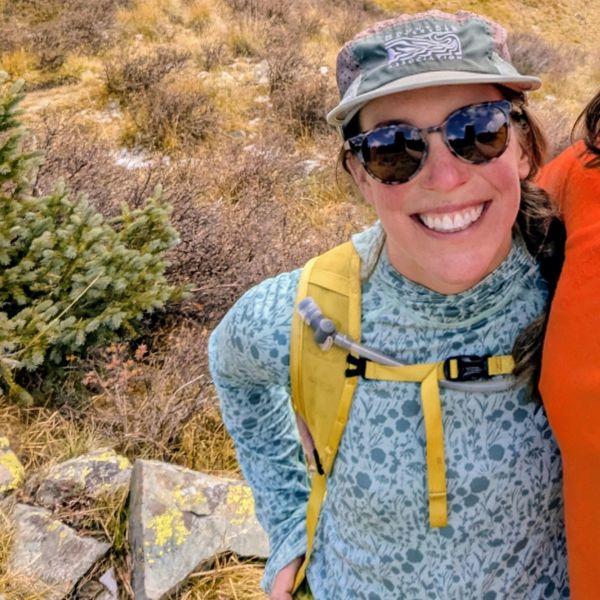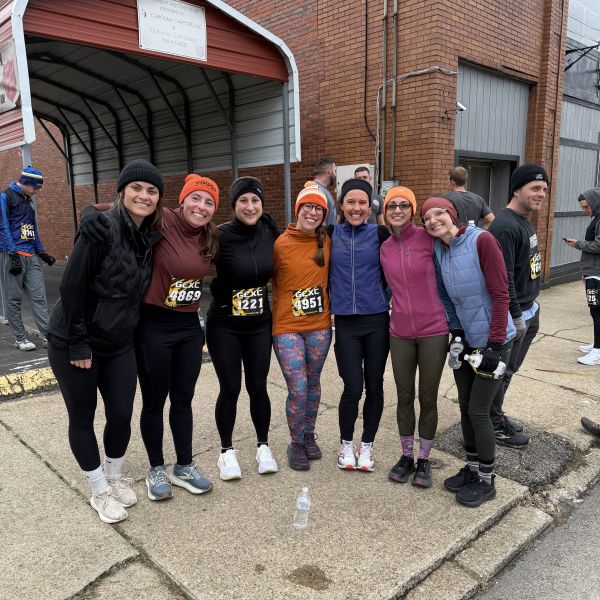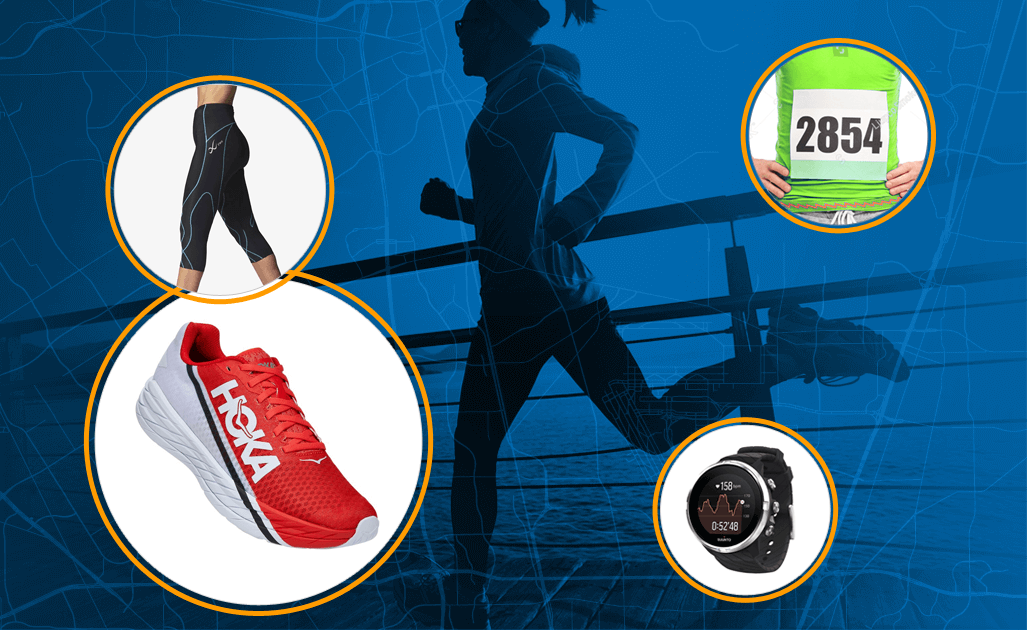Can yoga for runners really make a difference?
Let's be honest. A lot of runners skip yoga and stretching, and and it shows up in the form of things like:
But what if yoga for runners could transform your run experience, make you a better runner, lower your risk for injuries, and improve your mindset to go the distance?
Would you give yoga for runners a chance?
Check out these runner-friendly poses + 9 ways yoga for runners can transform your run experience.
What is yoga, anyway?
The term yoga first originated in India thousands of years ago.
“The word yoga is derived from the Sanskrit root “yuj,” meaning to bind, join, attach and yoke, to direct and concentrate one’s attention on, to use and apply,” wrote B.K.S. Iyengar in Light on Yoga.
When it comes to yoga for runners, let’s break down the word yoga to a more modern, easily understood interpretation.
To begin, yoga encompasses more than the movement-based exercise we often attribute to the practice. We will begin our explanation of yoga with exactly that, the physical, and then delve into the mental aspect.
The physical discipline of yoga consists of postures, known as asanas in its original language of Sanskrit.
These postures thread together in a sequential format designed to create a challenging yet calming exercise experience.
The sequence of postures and movements build strength, flexibility, coordination, balance and focus while using the breath to guide and inform the practitioner.
The physical act of yoga was originally developed with the intention of expelling all clutter from the mind by putting the breath at the center of the practice.
It works in the same way that a good, solid run clarifies the mind.
Let’s examine how the physical forms of both yoga and running extend beyond the realm of movement to the intangibles of the mind, emotions and spirit, when done consistently over time.
For one, the act of running clears the mind and detoxifies the emotional self from negative thoughts and feelings in the same way that yoga cleanses the body, thus the mind.
Furthermore, the acts of yoga and running both employ the body to do difficult, rigorous work, with the outcome of not only toned muscles and a more balanced physique, but also a steadier state of mind and a sense of inner peace, the latter sometimes being, at first, unintentional.
"In other words, yoga and running possess the ability to bring one to equilibrium."
Have you ever felt, after coming down from the high of a particularly difficult run, that sense of deep calm, where not a single inward or outward trigger could disturb the quiescence of the mind?
That’s equilibrium.
The same after-effect can occur post-yoga, too.
In fact, arriving at equilibrium is one of the original purposes of a physical yoga practice and why the ancient yogis developed poses.
Could we, then, transfer the purpose of equilibrium to running? When we meld the intentions of yoga with our running practice, then, yes, indeed, we can.
Before we talk about intention, here are some ways to define yoga.
The concept of yoga for runners applies these principles as they pertain to the needs of runners and breaks down the practice in ways that runners can use them.
Now, let’s return to the setting of intention. Since intention setting is typically the first thing we do in a yoga class, we will begin there as we dissect the ways in which yoga can be applied to running.
When we are brought to attention by yoga instructors, we are often invited to set an intention for our practice.
An intention is:
You are seated, standing or lying supine, and the instructor invites you to press your palms together in front of your heart or over your head and set an intention
An infinite number of intentions exist - they are as varied and unique as snowflakes and human beings.
Examples of intentions:
Yoga encourages carrying intentions off the mat, after the session has ended, to apply it to the whole life, every thought, action and word.
For runners, intention setting is something easily incorporated, a silent statement prior to running, or one that comes up along the way.
Without a yoga instructor’s verbal cueing, this is a chance to figure out a personal intention.
It can be as simple as the ones listed above, or even simpler, one word, like “love” repeated over and over as the miles go by.
To simplify, the same intention can be used on every single run, every day, for years, or a set intention can be used every Monday, for instance.
On the broader spectrum, races and publicized runs are often born from an intention.
As you can see, intentions, within yoga and running, can be private, personal, kept to oneself, or shared, broadcasted. They give meaning to what we are doing with our bodies and fill our actions with passion and purpose.
Former high school or college runners may be familiar with the warm-up routine of high knees, butt kicks, karaokes, strides and the like, but there are other ways to prime the body for a run.
To get in tune with the breath and bring awareness to the body, dynamic yoga sequences are a wonderful way to prep pre-run. They offer the prime opportunity for warming up the joints, muscles and connective tissues.
For instance, sun salutations and Dancing Warrior Flows are popular warm-ups in yoga classes and can be applied to running, too.
Whether it’s:
…If each posture is held for one breath, then the entire body is warming up in an active way while igniting expansive, mindful breathing that can be carried over into the run.
Yogis can even get creative and create their own warm-up while keeping the one-breath-per-movement rhythm.
Runners are constantly being told to strength train in order to address the imbalances that go with running and to prevent injury. If you’re not keen on lifting weights, it’s OK - yoga is a total-body strength workout:
Countless class names exist these days, so read the class description to make sure you get what you want.
All in all, yoga:
As the old adage goes, running an ultra is something like 80 percent mental and 20 percent physical.
Because not all runners run ultras, I would venture to say that:
"Running anything particularly difficult, or willing oneself out the door to run some days, or having the capacity to prioritize running, takes a rather large chunk of mental fortitude."
Undoubtedly, yoga enhances a runner’s ability to harness the power of the mind.,
Running trains the brain with precision, making that 80 percent mental piece more attainable.
It can give you the ability to sprint to the finish in an all-out 5k, or to decide to run at all when motivation plummets or life gets in the way.
B.K.S. Iyengar said it best in the book Light on Yoga:
“Breath is the king of mind.”
By joining the breath with the movement of yoga, the mind is invited to focus, or come into single-pointed concentration.
Likewise, lots of runners claim running as their form of meditation.
While some yogis (certainly ancient yogis who lived 5,000 years ago) say that meditation happens while sitting still, the more modern view is that meditation can happen anywhere, anytime.
Just search “meditation for runners,” and you’ll find endless lists of meditations meant to be played while running.
Practiced over time, the mind/body connection that takes place on the yoga mat and in meditation will seamlessly begin to blend into your running practice and may even bring you to experience running in new ways.
After all, meditation is a proven tool to enhance athletic performance, and yoga asana (postures) prepares you for meditation.
How do you meditate? Start here:
Have you ever rolled your eyes at yet another running story boasting ways to improve, get faster, go farther, as if we runners were not good enough exactly as we are?
While dreaming and shooting for the stars with running goals have a time and place, to always strive and do more is not a sustainable way to live, let alone run.
Yoga, on the other hand, encourages the opposite. Most yoga instructors call students to:
If we transferred the “honor your body” (skip a workout if a niggle is present) and “take a break” (like walking for a minute) mentality to running, what would happen?
Perhaps our favorite high-impact sport would become less goal-oriented and “Type A,” as they say, and more of a sacred space of self-acceptance and self-love… or a healthy balance of the two that shifts from season to season or life stage to stage.
A post-run cool-down is different from stretching post-run - read how here.
The cool-down is meant as a transition, gradually bringing down the heart rate. Traditionally, a cool-down is a slow jog or walk, but it can also be in the form of yoga.
Cooling down with dynamic yoga slowly brings the breathing back to base and prepares the body for the post-run stretch, which brings us to number seven.
After a brief cool-down, it’s time to transition to longer-held stretches with optional slow, breath-paced dynamic versions, including:
Allowing the body time to cool off then decompress is paramount to recovery.
Yet, many of us are squeezing our runs between work and life with little time to cool down and stretch after a run.
When time is tight, try ending your run with:
When you have more time, add more reps and more poses.
Another option is to fit in a yoga practice any time of the day, because it’s always a good time for yoga.
Remember - just like in running, consistency with yoga prevents injury and prepares you for the next time you hit the track, road, trails or mat.
Rest days mean a day of zero physical activity.
If you want to give yourself a complete day of unwinding, skip the power yoga and vinyasas.
Instead, try these:
Restorative and Yin Yoga are two distinctly different types of yoga, both of which can speed up recovery and tap into the parasympathetic nervous system, responsible for resting and digesting, aiding in total calm and stress release and improving sleep, the ultimate healer.
Recommended for practice:
If not, maybe it’s time to get to know this life force, and there’s no better place to start than with yoga.
The breath is the tie that binds the physical with the mental, the thread that creates the bondage of soul and movement.
Runners can benefit from heightening their awareness of the breath and from learning how to use their breath.
How? Breath can act as a barometer of a run or workout and is directly linked to the lungs, which support the cardiovascular exercise that is running.
Many forms of pranayama, defined as breath control, exist, and they each have their own unique perks, including but not limited to:
Here is a list of my favorite pranayama practices, which I do, during yoga (of course), and also while driving, working, some while running, biking, skiing, hiking, kayaking, climbing and before bed, or at any random time the desire strikes:
Furthermore, Running on Air: The Revolutionary Way to Run Better By Breathing Smarter by Budd Coates, M.D., and Claire Kowalchik, “shows readers how focusing on their breathing brings their minds and bodies into harmony and helps them run stronger, faster, and more comfortably.”
While I do not consistently use the running on air method, I do play with it, as it is more or less another form of pranayama.
Runners can find a wide array of yoga classes online from the comfort of their homes. Since the COVID-19 pandemic, the choices available have skyrocketed. Here are some of my favorites.
Podcasts
Flow With Me Yoga with Natalia Emery Hastings
Apps
Many online streaming modules exist. Over the years, I have tried a handful. Only one has captured me completely and fully, bringing me back day after day.
This site has been my number one go-to since the birth of my first child in 2013. With an infant, traveling more than 30 minutes from the mountains to city-based yoga studios took a backseat, and I developed a daily habit that has stuck ever since: morning, at-home yoga.
YouTube
Yoga with Adriene: Yoga for Runners
DVDs
These are the DVDs I used for more than a decade as a supplement to in-person classes and prior to the popularity of online streaming.
Practicing yoga in person with a skilled instructor was once the best way to learn yoga.
It still is the number one way to learn the basics and foundations, establish a practice and receive feedback.
With that being said, the COVID-19 pandemic has changed the atmosphere of in-person yoga and perhaps one’s attitude about showing up for a class.
If being in a crowded room with strangers causes the stress levels to rise, skip it - there are lots of great classes for beginners and newbies on the app listed above.
To continue, one’s residence dictates how many in-person options are available. Cities offer more, of course, while those who live in remote areas may have to think outside the box to find yoga classes.
NOTE: the best instructors and classes are not always found in the best-looking spaces.
I have taken yoga classes in Santa Fe, San Diego, Milwaukee, Boston, Pittsburgh, Boulder, New Orleans, Asheville, New Zealand and many small towns in between.
To date, one of the best in-person yoga experience I have come across were the 90-minute hot power classes conducted by Yogi Wade Zinter in a tiny river town in a shabby room, adorned with ancient black and white photos depicting the local history, within a community center nestled at the foothills of the Appalachian Mountains.
Now, the good thing about large cities is that it is possible to experiment with a variety of yoga styles and to try out lots of different teachers.
Finding the instructor + yoga style combination that suits you best can take time and effort, trial and error.
For an immersive yoga experience, make a vacation out of it.
Yoga retreats are one way to get away from it all and to fit yoga into life without competing responsibilities, which can be one way of forming a sustainable habit.
Thousands of yoga retreats exist, from those focused on yoga only to ones incorporating surfing, learning Spanish, volunteering and, yes, even running.
Because this is a story about yoga for runners, written for runners by a runner, why not find a yoga for runners retreat? It’s the perfect pairing for runners wanting to explore yoga or runners who already love yoga but don’t need a full-on retreat of nothing but yoga.
Run Wild Retreats are mindful running retreats for women, some of which incorporate yoga, meditation and spa indulgences. Perusing their catalog will surely get any runner dreaming of beautiful trails in Iceland, Ireland, Spain, Vermont, Moab, and more.
Christine Felstead’s Yoga for Runners retreats were created by a woman who was first an avid marathoner who fell upon yoga and its healing benefits for her running injuries. When she became a yoga teacher in the early 2000s, she sought to teach the benefits of yoga to fellow runners and developed a book, DVDs and workshops.
Maybe a yoga for runners retreat is something to add alongside that bucket list of races!
Recommended books
Recommended podcasts
Recommended online magazines
Yoga is a comprehensive system that addresses the many needs of humans, and beyond that, humans who run. As you can see, yoga and running overlap and complement one another in a fluid way while sharing similar characteristics.
Both yoga and running:
All in all, the purpose of “yoga for runners” is to create a mind/body/spirit connection with running using yoga as a conduit and breathing as the primary guiding element so that running becomes a lifelong, easy, enjoyable, rhythmic practice, with yoga at its core.

Login to your account to leave a comment.





We Want to Give it to You!
